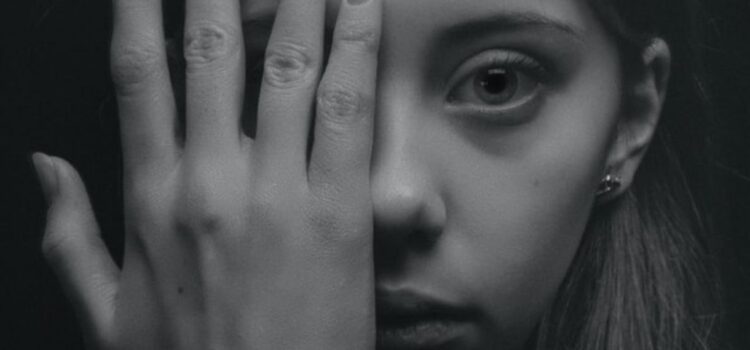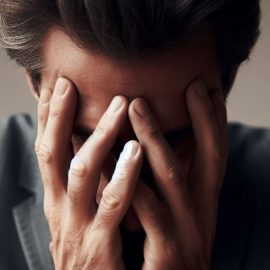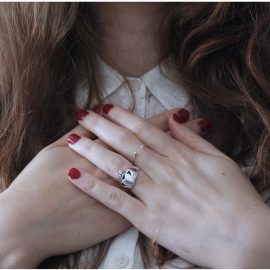

This article is an excerpt from the Shortform book guide to "A New Earth" by Eckhart Tolle. Shortform has the world's best summaries and analyses of books you should be reading.
Like this article? Sign up for a free trial here .
What exactly is the self? Where does our sense of self come from?
According to Eckhart Tolle, the self arises as a result of the ego’s attempt to eliminate its fear of being nothing by collecting and identifying with material, thought, and emotional elements. Gaining elements alleviates the fear of being nothing because it gives the ego an identity—something to call “me,” “mine,” and “my story.” These elements and our social standing form the mental image most people conjure up when they think of the “self.”
In this article, we’ll explore the elements of self and how they relate to each other.
Material Elements
Material elements are the physical things that we identify with,—typically our possessions and our physical body. For example, your clothing, hairstyle, and home tend to represent the image you see of yourself and how you want to be seen by others. We alter these physical elements based on the self-image we want to present.
Our ego constantly desires more and higher-quality material elements because of our need for superiority—there’ll always be someone with more than us, and this knowledge reignites our fear of being nothing. When we acquire “better” material elements, we lessen that fear. For example, this urge manifests itself as the need to dress in the newest trends or get rhinoplasty to fit the current beauty standard. You do these things to alter your image so your ego and other people see you as “good enough” or “better.”
This obsession with materials has led our consumer society and economy to a place where the only measure of success is having more, which has resulted in greed, pollution, and depletion of resources—one aspect of human dysfunction.
(Shortform note: Scientists explain that human consumerism is severely undermining natural systems and making it increasingly difficult for the poor to meet basic needs. Our incessant desire for highly processed foods, bigger houses, nicer cars, and the accumulation of non-essential goods is depleting the planet’s water supply, natural resources, and diverse ecosystems. They add that roughly 37% of the planet’s species could become extinct as a result.)
Thought Elements
Tolle explains that the thought elements of self are the recurring thought patterns we identify with, such as the roles we play (like mother, customer, or employee) and the ideologies we believe in (like morals, values, and religions).
Our thought elements shape how we interact with the world and lead to two forms of human dysfunction:
1. Inauthentic relationships: Tolle argues that when we adhere to societal roles, we act based on what we think that role calls for rather than how we really feel. When that happens, our relationships can become artificial. For example, when we’re playing a parent role, we might act superior because we’re “the knowledgeable adult,” and we therefore might end up missing a more authentic emotional connection that our child needs. In extreme forms, role-based relationships can lead to human mistreatment like slave versus master, or in everyday forms, like an abusive boss and submissive employee. Ultimately, when we see another person as a label—a child, slave, employee, and so on—rather than a human being, our relationship with them is formed according to this label rather than how we feel toward them.
2. Polarization and violence: When we attach our self-image to ideologies like religious beliefs, we want to feel these beliefs are “right” (superior) for our ego to feel “enough.” Consequently, we insist that others who contradict our beliefs are “wrong” and will often resort to violence to assert this truth. For example, during the Crusades, Christians raped, tortured, and killed those of different spiritual beliefs to assert Christianity as “right.” Ultimately, when others fail to share our beliefs, morals, or values, we experience negative emotions like anger, frustration, and resentment—the underlying causes of human polarization and violence.
(Shortform note: Experts agree that religious identity can cause polarization and violence because the underlying psychological function of religion is to provide us with a sense of certainty and identity. The human need to have an identity, and for that identity to be “right,” can grow so strong that the individual becomes more concerned with maintaining their truth than upholding the religion’s teachings. Ultimately, experts explain that the more reliant people are on religion as a form of certainty and identity, the less compassionate and understanding they are of others, and the more likely they are to grow distant from and even violent towards people who contradict their beliefs.)
Emotional Elements
Tolle explains that our emotions—our bodies’ responses to our thought elements—also form our self-image. When we experience a recurring thought and consequent emotional reaction, it becomes part of our identity. In other words, our emotions aren’t caused by situations, but by the thoughts we have about the situation. And, the more strongly we identify with our thought elements (morals, values, and beliefs), the stronger our emotional reactions will be when things don’t meet our expectations.
Furthermore, each time we have a negative emotional reaction to a situation, it affirms the thought that caused the emotion. When the thought pattern is affirmed, we’re rewarded with a feeling of superiority for being “right,” and we will be more likely to experience the same thought and emotion in similar situations in the future.
For example, if we operate on the underlying thought element that no one’s trustworthy, we’re likely to interpret honest mistakes as deceit. If someone mistakenly takes our jacket thinking it’s theirs, we’re going to assume they were trying to steal it from us. Then, we will have an emotional reaction that affirms this belief—“they tried to steal my jacket and play it off as a mistake. I knew it, no one is trustworthy.” This will make us feel superior for being “right” and we will now be more likely to experience the same misinterpretation in the future.
The Pain-Body
Tolle explains that our emotional identity is housed in an energy form called the pain-body—the part of our mind that collects and stores all the negative emotional experiences we’ve had in our life. The pain-body collects these emotional experiences, and the next time a similar situation occurs, it reminds us of our previous negative thoughts and emotions and prompts us to react in the same way. This suffering ultimately strengthens the ego because it feeds on negativity.
(Shortform note: The “pain-body” is a term created by Tolle and heavily used throughout his works. Since the publication of his previous book, The Power of Now, the term has come to be widely used in the spiritual community as well.)
The pain-body not only stores these emotions but also feeds off them. So, the more we experience negative emotions, the denser and more reactive the pain-body gets, and the bleaker our emotional identity and perception of the world become. Additionally, the denser the pain-body becomes, the more it craves further negativity to sustain itself, and thus the more it seeks out, recognizes, and creates negative thoughts and emotions.
Therefore, our pain-body causes dysfunction by trapping us in an endless cycle of suffering that affects us and those closest to us.
(Shortform note: Tolle argues that the pain-body makes us prone to negativity. Experts call this phenomenon the negativity bias. Like Tolle, they explain that humans tend to be more prone to negative thoughts than positive ones, and that negativity has a cyclical function—when we experience negative events, we tend to dwell on them and remember them more easily, ultimately making us respond more strongly to negative stimuli in the future. However, rather than attributing this effect to the pain-body, they say that it’s because of human evolution—early humans were more likely to survive if they paid more attention to bad or dangerous things over good and harmless things.)

———End of Preview———
Like what you just read? Read the rest of the world's best book summary and analysis of Eckhart Tolle's "A New Earth" at Shortform .
Here's what you'll find in our full A New Earth summary :
- Eckhart Tolle's guide on how to evaluate your consciousness
- How to overcome ego-driven thoughts and behaviors
- Why humanity must undergo an evolution of consciousness






